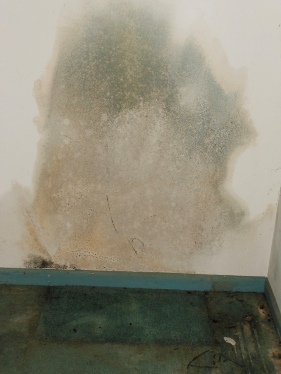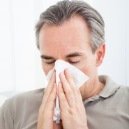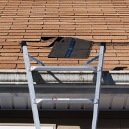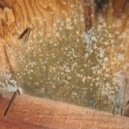Find a pre-screened local mold removal specialist Free Estimate
Find a Mold Specialist Now
Click or Call, Toll-Free 24/7
Health Dangers of Blue Mold
Blue mold or bluish-green mold in the home is usually one of two types of mold, Penicillium or Aspergillus. They are some of the fastest growing molds (usually within 24 to 48 hours) and require very little moisture for their colonies to develop.
If Penicillium sounds familiar, it should. It is the same type of mold from which the antibiotic penicillin is made. There are over 300 different species of Penicillium and due to its medical use, it is poorly understood by the majority of people.
Blue mold is often found growing on food, especially breads and citrus fruits, but it can also be found growing on household materials like wallpaper, drywall, insulation and carpeting, that have been damaged by water. It can also be found on furnishings that have suffered water damage, like couch cushions and mattresses.
The other common type of blue mold is Aspergillus. Aspergillus usually grows on decaying vegetation and leaves. People come into contact with this type of mold almost daily, but unless you have a weak immune system or a lung disease, you are unlikely to be affected by it. The most common disease caused by Aspergillus is known as Aspergillosis. Usually, the people most susceptible to this disease are people with a weakened immune system due to cancer, leukemia, or AIDS, or those that have received chemotherapy treatments. If Aspergillosis gets into your lungs it can easily spread to your kidneys or brain, becoming life threatening.
The color of a mold is not an indicator of a specific health hazard, but some species of Penicillium and Aspergillus are known to produce toxic compounds, called mycotoxins, that can be harmful to humans and animals alike. For this reason, all blue or blue-green molds should be considered to be a potential health risk. If you have any type of compromised immune system you should avoid things like compost piles, decaying vegetation, and stored grain facilities, which often have mold.
Health Problems Caused by Blue Mold
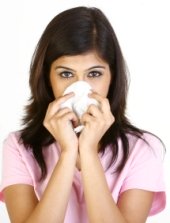
The fact that penicillin is made from the mold Penicillium does not mean that it is healthy for people to be around Penicillium or Aspergillus. Breathing the spores from the blue colored mold can cause health problems, including allergic reactions, inflammation of the lungs, pain in the chest, and sinus infections. People with conditions like asthma and emphysema are more susceptible to mold-related illnesses, as are the very young and the very old. However, anyone can be affected.
If you have health problems you think might be caused by exposure to mold, talk to your doctor. Your doctor can perform allergy tests or other tests in order to make a diagnosis and prescribe the appropriate treatment. In order to fully recover, though, you’ll need to clean up the mold in your home to avoid further exposure.
Cleaning Up Blue Mold
Penicillium and Aspergillus mold spreads quickly and easy throughout the home so if you spot some blue colored mold, you should take care of it as soon as possible. Unfortunately, since blue mold spreads so rapidly, if you spot some in one area of the home it’s quite likely some is already growing in other parts of the house, as well. Before you can clean it up, you have to find it. Since mold often grows in places where it cannot easily be seen, like inside walls and in heating and ventilation ducts, we suggest having a professional come in to test your home for mold. Certified mold testers can conduct specialized tests to locate all areas in the home where any type of mold is growing. For a list of certified mold testers near you, just follow the link.
You may be able to remove mold from non-porous surfaces like metal, glass, bathtubs, toilets, and tile floors with an antimicrobial cleaner, like Foster 40-80. It’s usually not possible to remove mold completely from porous surfaces, though, such as wood, drywall, ceiling tiles, insulation, and carpeting. Those materials will need to be contained and then removed from the home, taking great care in order to prevent spreading mold to other unaffected areas during the removal process. After the mold is completely removed, you can replace any materials that had to be discarded.
You should wear an N-95 rated full-face respirator, disposable clothing that covers your head as well as your shoes (tyvek coveralls), and gloves (we also recommend taping the gloves to your suit to help keep mold spores outside of your clothing) while cleaning up mold in order to protect yourself from inhaling or coming into contact with any microscopic mold spores, which could cause serious health problems. If you do not have access to a full-face respirator, you can wear a N-95 rated dust mask along with goggles to provide eye protection. Your nose, throat, and eyes are the easiest places where mold spores can invade your body.
Many mold remediation experts also recommend setting up negative pressure in your work area, especially if you are dealing with a large amount of mold. This will prevent any mold spores that becomes airborne from spreading to other areas of the home. Once the mold removal is complete you should keep the negative air pressure in place for at least an additional 48 hours. This is an especially good idea when dealing with the molds Penicillium and Aspegillus, since these molds spread so easily. You can follow this link for more details on the mold removal process.
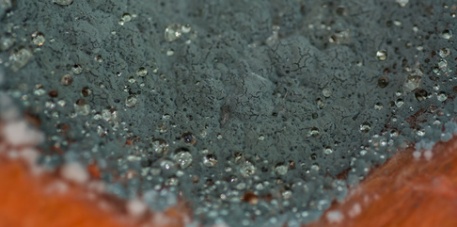
Professional Mold Remediation
As you might have gathered by now, cleaning up Penicillium or Aspergillus mold can be a complicated task. We recommend making an appointment for a free consultation with an experienced mold remediation professional, who will come to your home, inspect the situation, and advise you about the remediation work that needs to be done. Even if you end up deciding to tackle the job yourself, you will benefit from some free professional advice. If you’re dealing any mold-related health issues, though, you should talk to your doctor before trying to clean up the mold yourself; your doctor will probably advice you to hire a professional. For a list of mold remediation professionals offering free consultations near you, just follow the link.
Free Home Inspection By A Mold Removal Specialist
Search This Website
Recent Articles
-
See Our 5 Recommended Mold Removal Companies in Covington, KY
Apr 16, 25 12:59 PM
-
See Our 5 Recommended Mold Removal Companies in Wheaton, IL
Jun 20, 24 10:33 AM
-
See Our 5 Recommended Mold Removal Companies in Aberdeen, SD
Oct 08, 21 04:05 PM
